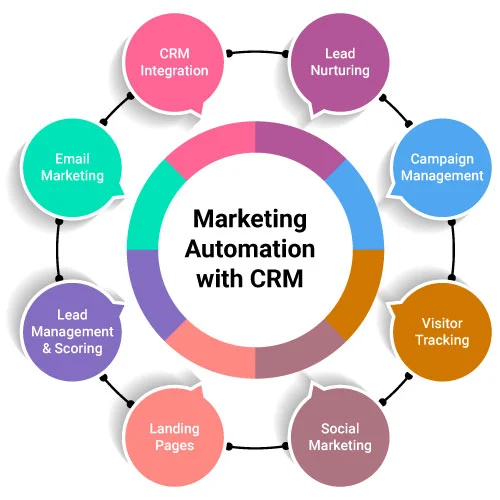A Guide for New Business Owners on Where to Start
Understanding the Difference Between CRM and Email Marketing, Marketing Automation. For any business, especially when you’re just starting out, it can be overwhelming to navigate the different marketing and sales tools available. Among the most common terms you’ll come across are CRM (Customer Relationship Management), email marketing, and marketing automation. While these concepts are often used interchangeably, they serve distinct purposes in a business and should be approached with different strategies. Understanding the difference between them will help you prioritize which tools to use first and how to effectively grow your business.
READ TOO: How to Start an Email Marketing Agency in 2024
What is CRM?
A CRM is a tool used to manage relationships with your customers. It helps businesses store and organize contact information, track interactions, and manage sales pipelines. Think of CRM as your business’s central database where you keep all the important information about your leads and customers. It includes details like names, emails, phone numbers, and the history of interactions you’ve had with them.
CRMs are vital for keeping track of your prospects and clients, especially as your business grows. Without one, you’d be relying on memory or scattered notes to manage ongoing deals, which isn’t feasible in the long run. CRMs help ensure you follow up with leads in a timely manner and don’t miss out on any opportunities.
There are plenty of CRM software options available, like Pipedrive, HubSpot, and Zoho, each offering different features. The key is to choose one that fits your business needs and scales as you grow.
What is Email Marketing?
Email marketing is a marketing channel focused on sending promotional or informational emails to a list of subscribers. It’s one of the most direct ways to communicate with your audience. Email marketing can be used for sending newsletters, special promotions, or event invitations. It’s effective for keeping your business top-of-mind with your customers and building a deeper relationship with them over time.
There are two main types of email marketing: campaigns and automations.
- Campaigns are single emails or series of emails sent to a specific group of contacts, often called “blasts.” Examples include promotional offers or monthly newsletters.
- Automations, on the other hand, refer to a pre-designed sequence of emails that are triggered based on a user’s actions. For instance, if someone subscribes to your email list, they might automatically receive a welcome email followed by a series of educational emails.
To get started with email marketing, you’ll need a platform like MailChimp, Klaviyo, or ActiveCampaign. For beginners, MailChimp offers a free plan if you have fewer than 2,000 subscribers, making it an excellent tool for small businesses just starting out. One important note: never buy email lists or send unsolicited emails—this is considered spam and could damage your business’s reputation.
What is Marketing Automation?
Marketing automation is the process of using software to automate marketing tasks across various channels. It includes automating tasks like sending follow-up emails, managing social media campaigns, or even sending SMS reminders. Marketing automation helps reduce manual work and allows businesses to scale their marketing efforts efficiently.
However, marketing automation is not a single tool or channel. Instead, it refers to the ability to automate processes within different marketing channels, whether it’s email, social media, or direct mail. For example, if you have a new customer sign-up on your website, marketing automation could trigger a sequence of emails to welcome them, share relevant resources, and invite them to follow your social media pages.
While marketing automation can be incredibly powerful, it’s essential to understand that it should not be your first step as a business owner. Before diving into automation, you need to have well-established processes in place. This means mastering manual methods of CRM management and email marketing first. Only after these systems are in place should you start thinking about automating them.
Where Should You Start?
As a new business owner, the temptation to jump into sophisticated marketing strategies can be strong. But, it’s crucial to start with the basics before moving on to more advanced tools.
- Begin with a CRM. This is your most essential tool for managing leads, tracking sales, and maintaining customer relationships. It’s your central hub for all customer data, and without it, you could miss important follow-ups or lose track of sales opportunities.
- Then, incorporate email marketing. Once you have a CRM in place, start building your email list through opt-in forms on your website. Use email marketing to send out regular updates, promotions, or newsletters to your audience.
- Finally, explore marketing automation. Automation is powerful, but it requires a solid foundation. Once you’ve mastered CRM and email marketing, and have manual processes that work, you can start automating repetitive tasks to save time and scale your efforts.
Conclusion
In summary, CRM, email marketing, and marketing automation are all powerful tools, but they each serve a different purpose in your business journey. Start by setting up a reliable CRM to manage your customer relationships, then move on to email marketing to nurture and engage your audience. Only when these processes are running smoothly should you consider introducing marketing automation to streamline your efforts. By following this approach, you’ll set your business up for sustainable, long-term growth.






